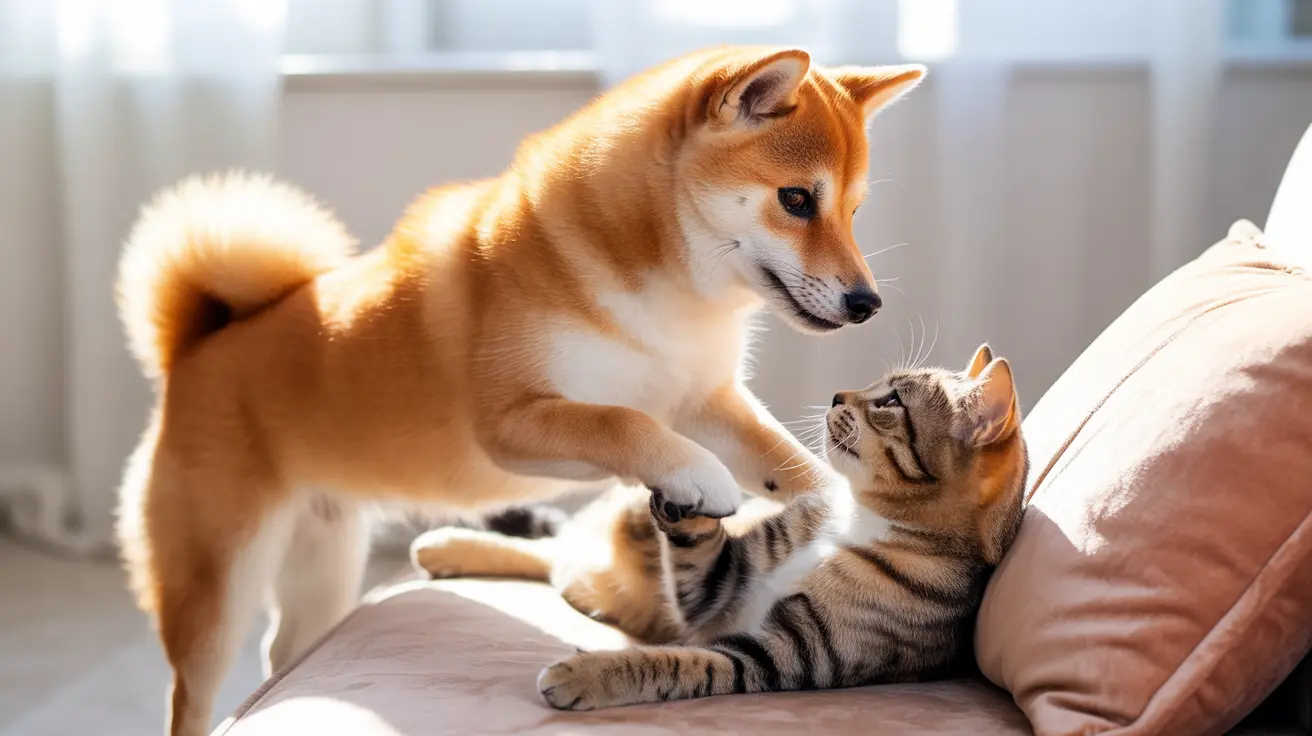Pet owners often wonder about the possibility of dogs and cats mating, especially when they observe mounting behavior between their pets. However, the scientific reality is clear: dogs and cats cannot mate successfully or produce offspring. Let's explore the biological barriers that make this impossible and understand what's really happening when these behaviors occur.
The Genetic Barrier: Why Dogs and Cats Can't Reproduce
The fundamental reason dogs and cats cannot mate successfully lies in their genetics. Dogs have 78 chromosomes (39 pairs), while cats have only 38 chromosomes (19 pairs). This dramatic difference makes it impossible for their genetic material to combine properly during fertilization.
To put this in perspective, even species with much closer chromosome counts (like horses and donkeys) often produce sterile offspring. The vast genetic gap between cats and dogs prevents even the initial formation of a viable embryo.
Anatomical and Physiological Incompatibilities
Reproductive Structure Differences
Beyond genetics, cats and dogs have fundamentally different reproductive anatomies. Male cats possess a barbed penis designed specifically for feline reproduction, which could potentially harm female dogs. Additionally, the reproductive tracts of both species have evolved to be compatible only with their own kind.
Mismatched Reproductive Cycles
The reproductive cycles of cats and dogs are completely incompatible:
- Dogs have a predictable ovulation cycle during heat
- Cats are induced ovulators, releasing eggs only after mating
- Each species fails to recognize the other's reproductive signals
Understanding Mounting Behavior
When dogs mount cats (or vice versa), it's not a genuine attempt at reproduction. This behavior typically stems from:
- Dominance display
- Play behavior
- Stress or excitement
- Hormonal responses
- Social confusion
While this behavior isn't reproductive in nature, it can be concerning due to potential injury risks, especially with size differences between the animals.
Managing Cross-Species Interactions
To maintain harmony in multi-pet households and prevent unwanted mounting behavior:
- Spay or neuter both pets
- Supervise interactions carefully
- Redirect inappropriate behavior
- Provide adequate exercise and mental stimulation
- Consult a veterinarian if the behavior becomes problematic
Debunking Common Myths
Despite what you might read online, there are no documented cases of cat-dog hybrids. Claims about "kuppies" or "pittens" are hoaxes or misidentifications. Reputable veterinary sources consistently confirm that cat-dog hybridization is biologically impossible.
Frequently Asked Questions
Can dogs and cats mate or produce hybrid offspring?
No, dogs and cats cannot mate successfully or produce offspring. Their genetic, anatomical, and physiological differences make reproduction between the species impossible.
Why can't a dog get a cat pregnant or vice versa?
The vast difference in chromosome numbers (78 for dogs vs. 38 for cats) and incompatible reproductive systems prevent any possibility of successful fertilization or pregnancy.
What causes dogs and cats to mount each other if they can't breed?
Mounting behavior between dogs and cats is typically related to dominance, play, stress, or misdirected sexual behavior. It's not a genuine attempt at reproduction.
Are there any real cases of dog–cat hybrids or "cat-dog" mixes?
No, there are no scientifically verified cases of dog-cat hybrids. All claimed cases are either hoaxes or misidentifications of regular cats or dogs.
How can I stop my dog from mounting my cat to prevent injury?
Spay or neuter both pets, redirect the behavior, provide adequate exercise and mental stimulation, and consult a veterinarian or animal behaviorist if the behavior persists.
Remember, while cats and dogs can live together harmoniously as pets, they remain distinct species with clear biological boundaries that prevent interbreeding. Understanding these limitations helps us better care for our pets and manage their interactions appropriately.






